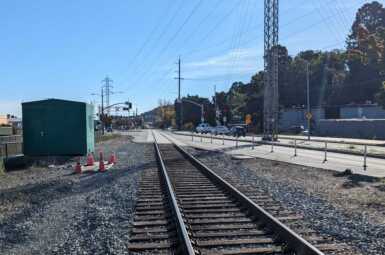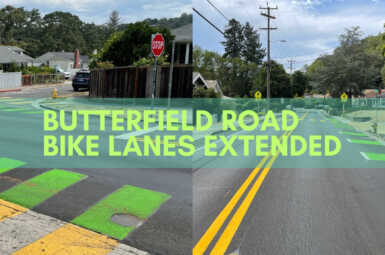Cycling Code of Conduct Bike Etiquette and Cycling Common Sense
The Cyclist’s Responsibilities & Rights
Along with the amazing freedom that comes with traveling Marin county on two wheels, there are regulations – quite simply the “Rules of the Road” – which every cyclist needs to be aware of. With few exceptions, a person using a bicycle on public roadways assumes the same rights and responsibilities as automobile drivers, and are subject to the same state laws and local ordinances. When someone riding a bicycle breaks the law, it tends to reflect upon all of us who choose a bike as our preferred means of transportation.
Many hold those incidents up as reasons to restrict cycling. All cyclists in Marin end up having to answer for those few who habitually ignore the laws. It’s frustrating and can needlessly complicate efforts to improve the bicycling experience here. We know that the more transportation options we can provide for people, the more opportunity there is to create a better future.
It starts by holding yourself to an appropriate standard. Showing respect to other road users and pedestrians is a key place to start. It demonstrates that you choose to ride responsibly and hold yourself up as an ambassador of cycling.
Practicing the Bicyclists’ Code of Conduct can help you ride responsibly!
Bicyclists’ Code of Conduct
- Never ride against traffic
- Ride as near to the right as practicable*
- Stop at stop signs and red lights*
- Honor others’ right of way
- Use hand signals
- With traffic, ride single file when practicable and appropriate
- Be predictable; don’t weave
- Follow lane markings
- Don’t needlessly block the road*
- Use lights at night
*–Note that the two most common offenses of bicyclists are running stop signs, and groups of cyclists blocking the road.
1. Stop at stop signs/lights. (Until we institute an “Idaho Stop” law, CVC mandates that cyclists stop at stop signs.) If two vehicles arrive at an intersection at the same time, the vehicle to the right has the right of way. Politely indicate others’ right of way with a hand gesture. For your own safety, never insist on your own right of way. Pedestrians always have the right of way. Your courtesy will be noticed and appreciated by other road users.
2. Group riding: a) The California Vehicle Code (CVC sec. 21202(a) and sec. 21750) states that bicyclists are entitled to the full width of the road for at least purposes of overtaking, left turns, avoiding obstacles, when approaching a place where a right turn is authorized, and when riding in a substandard width lane. Generally, it is prudent to stay as far to the right as practicable. Be aware of other road users at all times. b) When stopping for a stop sign in a group, queue up in small numbers and proceed when it is your turn, allowing other road users their right of way. The idea is to cross the intersection as safely and quickly as possible without testing the patience of other road users. Self-policing and courteous riding will go far.
Bicyclists and any passengers under 18 years of age (including children in attached bicycle seats or in or on towed trailers), are required to wear a properly fitted and fastened bicycle helmet. This helmet must be labeled to show that it meets applicable safety standards. Youngsters under the age of nine lack the physical and mental development to interact safely in a complex traffic environment.
 Bicycling Laws and Safety Tips
Bicycling Laws and Safety Tips
Bicyclists on public roadways assume all the same rights and responsibilities as automobile drivers, and are subject to the same state laws and local ordinances. For everyone’s safety, observe these bicycling rules:
Be Predictable
Never ride against traffic. Motorists aren’t looking for bicyclists riding on the wrong side of the road. Many other hazards threaten the wrong-way rider.
Obey traffic signs and signals, and basic right-of-way rules. Cyclists must drive like motorists if they want to be taken seriously. Doing so is also the safest behavior. When approaching a stop sign or red light, you are required to come to a complete stop and proceed only when safe to do so.
Use hand signals. Hand signals tell other road users what you intend to do. Signal as a matter of law, of courtesy, and of self-protection.
Ride in a straight line. Whenever possible, ride in a straight line, to the right of traffic but about a car door’s width away from parked cars.
Don’t weave between parked cars. Don’t ride to the curb between parked cars, unless they are far apart. Motorists may not see you when you try to move back into traffic.
Follow lane markings. Don’t turn left from the right lane. Don’t go straight in a lane marked “right-turn-only.” Stay to the left of the right-turn-only lane if you are going straight.
Choose the best way to turn left. There are two ways to make a left turn. 1) Like an auto. Signal, move into the left lane, and turn left. 2) Like a pedestrian. If you are within a designated crosswalk, dismount and walk your bike across.
Be Alert
Avoid the dreaded “Right Hook” – watch for right-turning traffic. Motorists turning right may not notice cyclists on their right. Watch for any indications that a motorist may turn into your path. When approaching intersections try to stay far enough from the curb to allow cars to turn right on your right. Motorists may not look for or see a bicycle passing on the right.
Stay out of the door zone! Even though it is the responsibility of the person exiting the vehicle to do so safely, leaving an appropriate buffer between you and parked vehicles is key.
Look back before you pass or merge. Leave a good 3-4 feet when passing a pedestrian or another bicyclist. A rear-view mirror is a good idea, but don’t rely on it alone.
Respect pedestrians’ rights. Pedestrians have the right of way. Don’t cross sidewalks via driveways without yielding to pedestrians. Respect local regulations regarding riding on the sidewalks. If conditions demand riding on near people on foot, proceed no faster than the speed of walking and yield to pedestrians. Know that it is difficult to hear a bicycle approaching from behind. Give a warning: use your bike bell, or call out “Passing on your left”.
Keep both hands ready to brake. You may not stop in time if you brake one-handed. Allow extra distance for stopping in rain, since brakes can be less efficient when wet.
Avoid road hazards. Watch out for street car tracks and railroad tracks. Cross them perpendicularly. Avoid parallel-slat sewer grates, slippery manhole covers, steel plates used to cover construction, oily pavement, gravel, potholes. All are hazardous, especially when wet.
Watch your speed. Observe posted speed limits and obey the basic speed law: Never ride faster than is safe under the existing conditions.
Be Appropriately Equipped
There have been great enhancements in LED lighting technology recently, but it still means you need to bring one with you. Use good lights at night. Front light, wheel and pedal reflectors are required. The front light must be visible from 300 feet. Use a rear red light for enhanced visibility. Wear light-colored or reflective clothing.
Ride a well-equipped bike. Be sure your bike is adjusted to fit you properly. For safety and efficiency, outfit it with bells, rear-view mirrors, racks or baskets, lights and reflectors.
Be visible. Many cyclists choose to wear contrasting, light or bright-colored clothing. Reflective clothing helps under adverse lighting conditions.
Wear a helmet when you ride. Use helmets that have passed Snell Foundation or ANSI Z90.4 standard crash tests should be worn. Bike helmets may need to be replaced after a fall. All youths 18 and under must wear a bicycle helmet when operating a bicycle or when riding as a passenger.
Passengers must ride on a separate attached seat. If the passenger is 4 years old or younger, or weighs 40 pounds or less, the seat shall adequately retain the passenger in place and protect him/her from the bike’s moving parts. In addition, this passenger must wear a helmet of good fit, fastened securely, meeting ANSI Z90.4 helmet standards or Snell Memorial Foundation’s 1984 Standard for protective headgear.
Keep your bike in good repair. Maintain your bike in good working condition. Check brakes regularly and keep tires properly inflated. Learn to do routine maintenance yourself or leave it to the experts at your local bike shop.
Parking Tips
Park considerately. Bicycle parking should not interfere with pedestrian or vehicle movements. Use bike racks properly, so more bikes may park.
Buy a lock that is appropriate and use it correctly. U-shaped locks offer good security but may require the removal of the front wheel in order to secure both wheels and frame. Lay the front wheel alongside the rear wheel and loop the ‘U’ around both wheels and frame of your bike. If the ‘U’ portion of the lock is completely filled with the wheels and frame, the lock has less chance of being broken open. Tall signposts and ironwork are the best objects to lock your bike against. Small trees are easily cut, permitting thieves to lift a locked bike away from its support. Chains should be hardened and secured by a keyed lock with hardened hasp of the same diameter. Be sure to secure both wheels and the frame, and never leave the padlock resting on the ground. Smaller diameter chains and cables are appropriate for short time use only, usually in instances where you can see the bike when it’s locked.
Keep a record of your bike serial number. Should your bike be stolen, report the serial number and description of your bike to the police department. There are also a number of stolen bike registry options via various online social media.
Motorist Etiquette Regarding Bicyclists
(From the California Driver Handbook)
Sharing the road with other vehicles: bicycles
Bicycle riders on public streets have the same rights and responsibilities as automobile drivers. Drivers of motor vehicles must treat bicycle riders the same as drivers of other motor vehicles. Bicyclists are not out of place on the roadway — they are part of the traffic and share the road with other drivers. They must obey stop signs, traffic lights, and most other traffic laws and signs. Special care must be used near them because any accident with them will probably result in serious injury. This means that automobile drivers must leave safe passing room and must not turn so close to them that the bicyclist is in danger of being hit.
Although bicyclists will normally ride near the right hand curb or edge of the roadway, they can legally move left to turn left, to pass another vehicle or bicycle, or to avoid debris or parked cars. They may have to swerve to avoid a car door suddenly opening. Expect any of these moves by bicyclists in a main traffic lane. Remember, on one-way streets, this can be the left hand lane.
When the lane is too narrow to pass a bicyclist safely, wait until the next lane is clear and give the bicyclist all the rights of any other slow moving vehicle.
A motorist parked at a curb must not open a door on the traffic side of a vehicle without looking for other vehicles, including bicycles or motorcycles.
Bicycle riders may give right turn signals with their right arm held straight out, pointing right. Remember, bicycles are small and sometimes drivers do not see them.

 Bicycling Laws and Safety Tips
Bicycling Laws and Safety Tips

